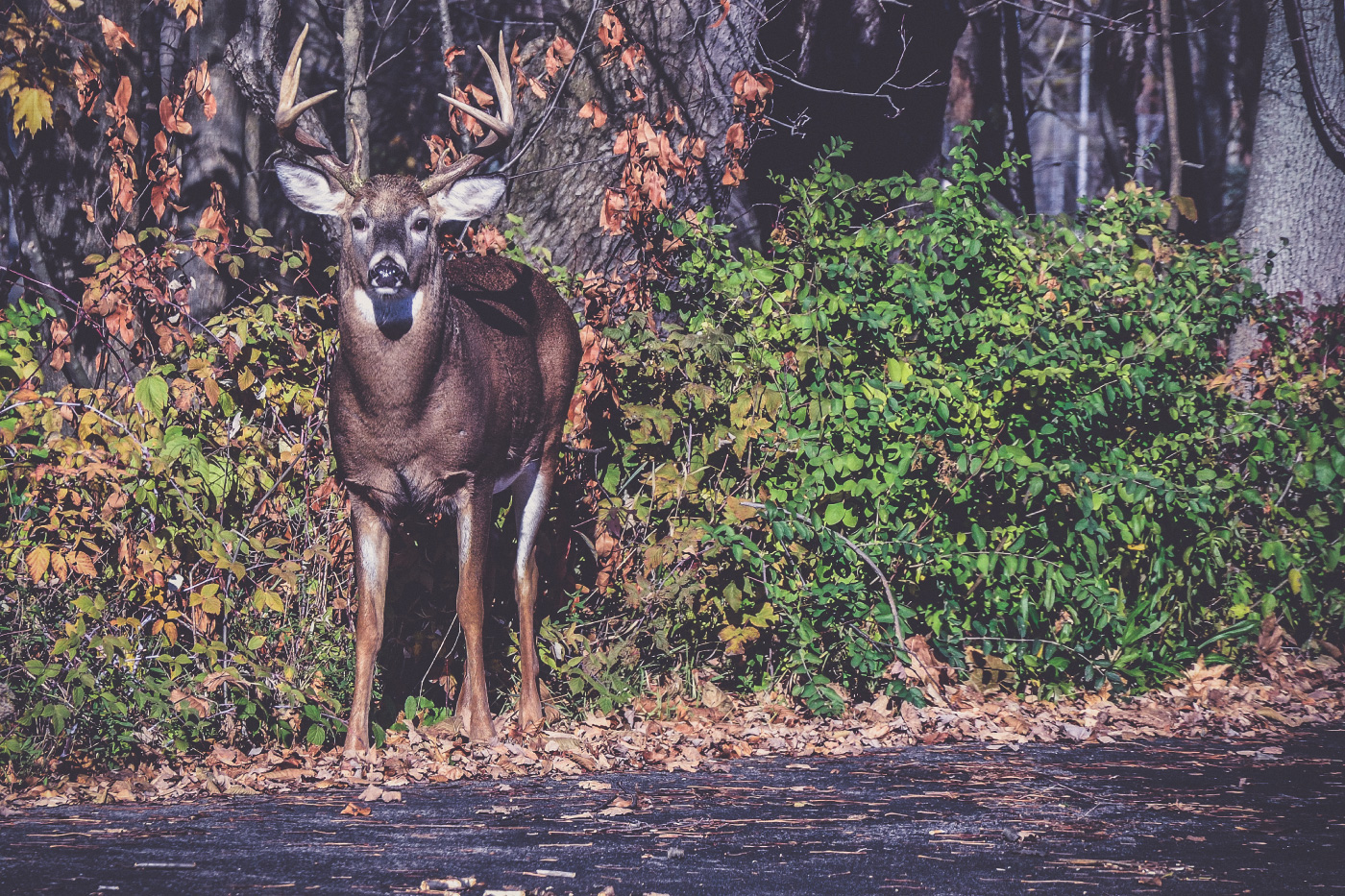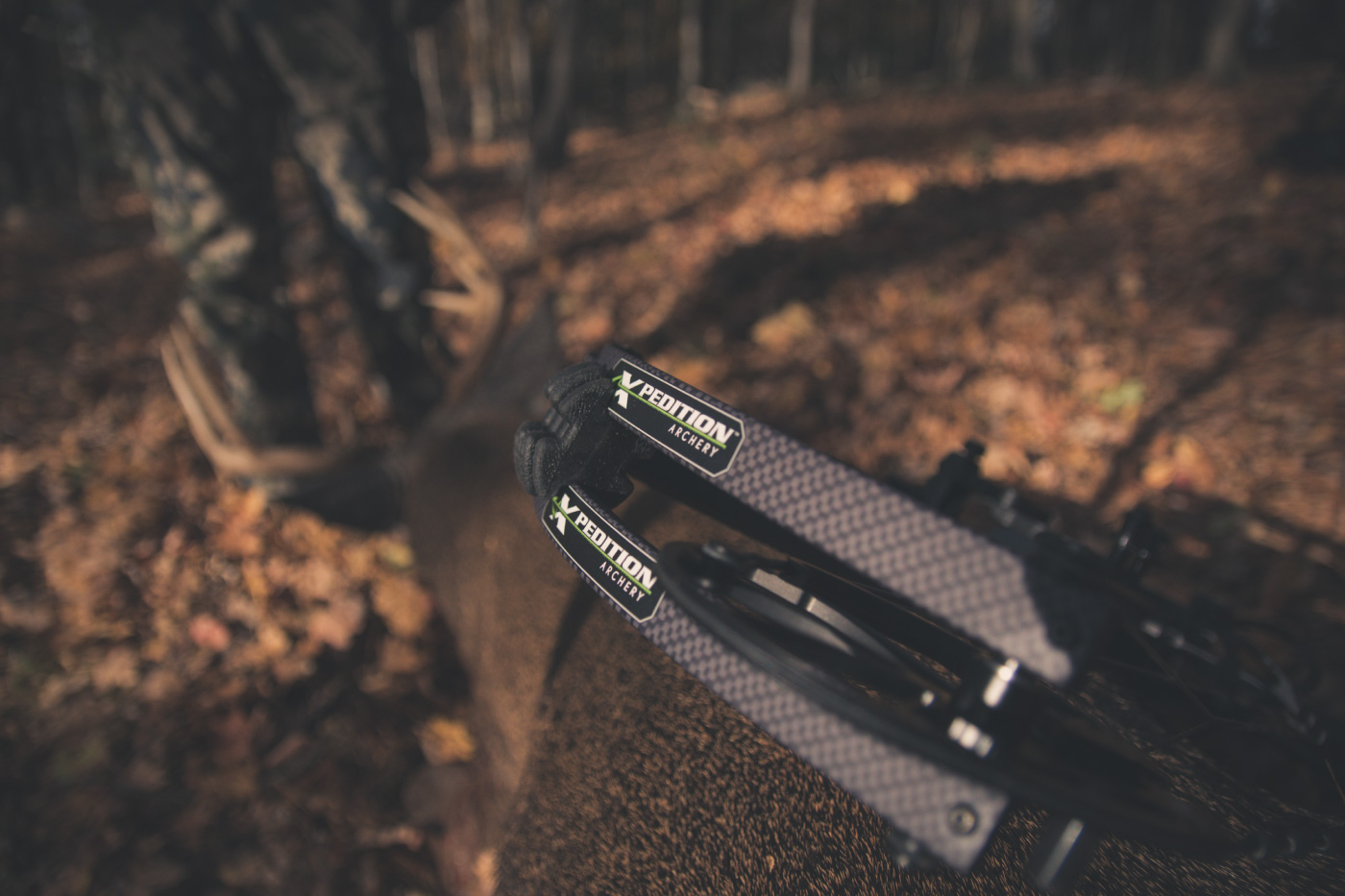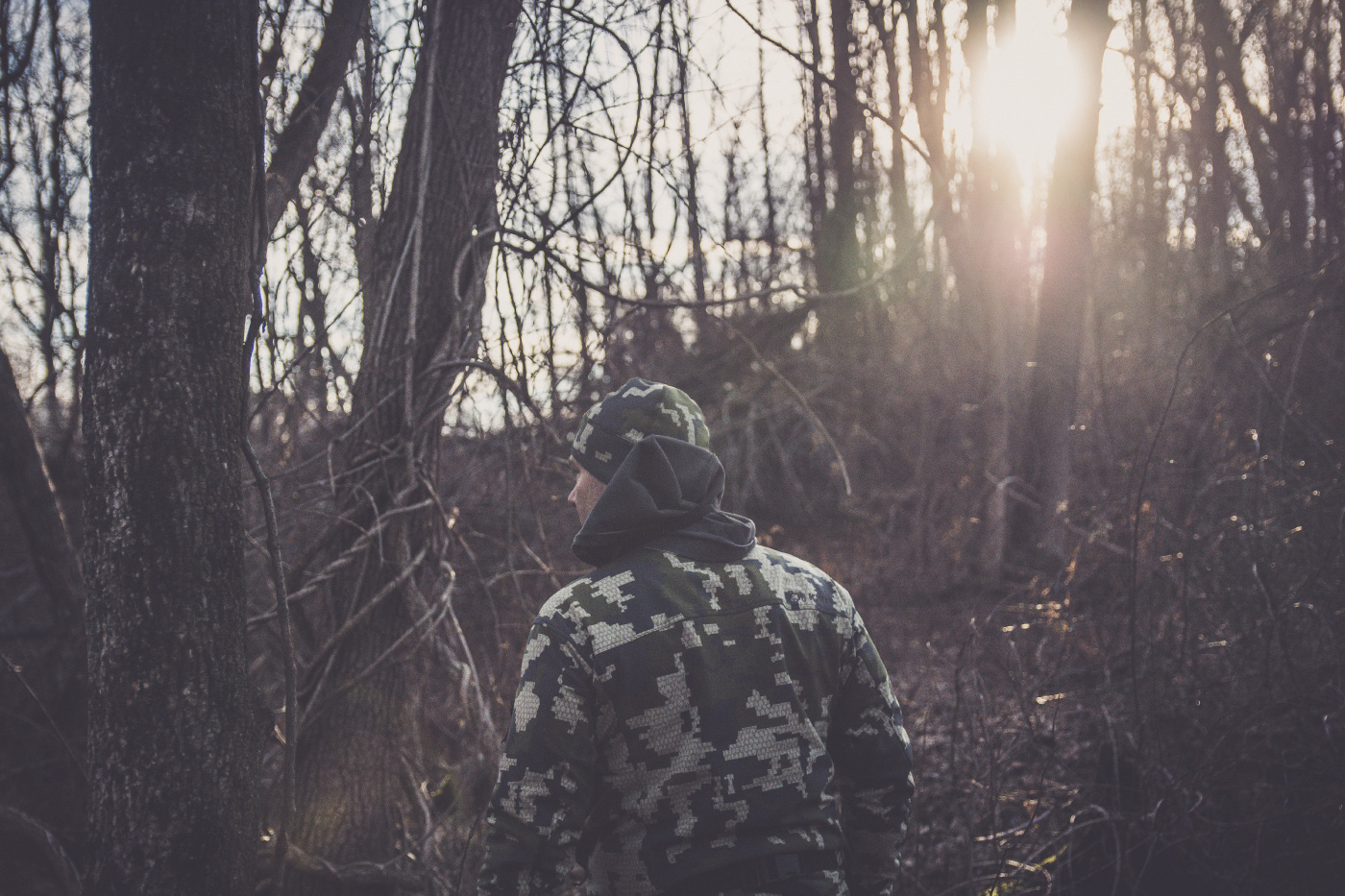
A.J. DeRosa founded Project Upland in 2014 as an excuse…
Urban Camouflage — what does that mean to a whitetail deer?
To understand urban camouflage we must think outside the box here as we are not talking in reference to the multi-million dollar business of producing camouflage patterns that conceal us in any environment. That would be physical camouflage, whereas we are talking about psychological camouflage. How can we emulate what a deer considers to be non-threatening human behavior?
You will find one common theme throughout the Urban Deer Complex 2.0 content and that’s the idea of deer being a conditioned animal. As a result of this conditioning, deer mentally log what is safe and what is not. In urban/suburban settings deer must distinguish the difference between threatening and non-threatening behavior.
Ultimately, what makes a deer understand a safe situation is repeatedly experiencing something with no threat to themselves or other whitetails around them. This can be a wide range of things. In fact, the list is so large that the idea here is to learn how to identify “urban camouflage” rather than describing each specific type.
What is urban camouflage?
Urban camouflage is a technique that allows you to blend with non-threatening human behavior to gain an advantage. For example, using walking trails that are commonly traveled by hikers, bikers and other non-hunters. In such situations, issues of wind direction are avoided by using a trail to enter a tree stand. The deer are used to detecting human scent on these trails regularly.
How to Identify Urban Camouflage
Identifying urban camouflage means taking one important step: think less like a hunter and more like an everyday citizen. We are ultimately separating everyday people from hunters, as if we are two separate species. By making the difference between the predatory hunter and the non-threatening human more definable, we can then understand more easily how to identify urban camouflage.
In what situations do non-hunters tell us they see deer? Are they walking a trail, raking leaves, driving a car? Were they talking, what were they wearing, what time of day was it? Deer analyze all of that sensory information when they decide if that particular person is threatening or non-threatening.
How many hunters have told you, “We saw the deer when we least expected it.” Analyze that statement and understand what was different from the hunt. If hunting with others, hunters will often talk when they are walking out from the woods about the weather, the hunt or things going on at home. They are no longer in hunting mode. They are most likely walking less like a hunter and no longer creeping through the woods. Hikers, speed walkers, kids, bikers all have very different movements than the distinct predator, the hunter.
Even the time of day can make these hunters less threatening, like walking from the woods after a morning hunt. Deer are used to human movement in daylight hours. They understand that human movement in the dark and the use of flashlights most likely means the presence of a predator, not a non-threatening human.
Consider our “least expecting” hunters. Deer are very adaptable creatures and hunters, more often than not, tend to be very stubborn traditionalists. Many hunters will believe that the further in the woods they go the better the chance they have at deer. As a result, deer have been conditioned to know that the closer they are to roads and buildings, the safer they remain.
The “least expecting” hunters saw those deer because they were not acting like hunters. They were exhibiting many behaviors of non-threatening, non-hunters. The style of their walk, their talking, the time of day and their location made them no threat in the eyes of a whitetail.
The ability to identify and analyze these situations is paramount in adapting these urban camouflages to harvest a whitetail. Begin to think when we see these common human behaviors, how can we make that help us as a hunter?
Threatening and Alerting Behavior
When we say “non-threatening behavior” we do not mean that the deer ignores everyday humans. Deer are alert animals. The difference between threatening behaviors and alerting behaviors is significant. A whitetail will stay still and allow common humans to pass. When these non-threatening humans pass, they are on high alert. They are ready to react at any sign of the behavior changing in the human. Things as small as the humans stopping for more than a second or two can make major differences. You can very quickly go from non-threatening to threatening.
That difference creates adaptable hunting behaviors, like walking while shooting a deer off a walking trail. If we stop the fluid motion, deer now begin to change from alert to panic. This method is used to keep them in this alert state either long enough for us to harvest them. It can also be used to pass by without arousing suspicion that we will be in a stand close by.
Adapting Urban Camouflage
The use of urban camouflage techniques can be as simple as using common walking trails for tree stand entry points, and as crazy as talking to ourselves while walking through the woods. The key factor to understand is that whitetails, like humans, are a constantly evolving animal, more so than most species. This is why their success in urban and suburban settings has been so great.
As a hunter, we need to constantly evolve and adapt. Although a method of urban camouflage may work consistently, it can lose its effectiveness over time as our deer population becomes wise to our tricks. The overuse of techniques can change non-threatening behaviors to threatening ones.
We can adapt a few things from non-hunters while in the woods. Deer are not afraid of talking humans. They understand what movement patterns they use, and they understand that they use actual hiking trails. Common people do not step off trails in the woods; hunters do. We can curb these behaviors by walking at consistent paces going to our hunting spots, and using common walking trails as means of entry. Often we can overlap tree stand locations with walking trails as an advantage over what would commonly be considered poor wind direction entries.
Other clever methods can be as seemingly crazy as talking to a friend (or even to ourselves) on the phone while walking in. Deer will see us as a passing everyday human posing no threat to themselves. This trick can often throw deer off once we are off of the man-made walking trails. It can cause both confusion and curiosity, as they are experiencing things outside a threatening behavior. Many hunters relate stories of having deer walk in on them after they have already shot a deer and were talking on their phones.
The Trick of Curiosity
The trick of curiosity is once you have introduced deer to a behavior they are not familiar with, stall long enough to harvest them or make them think you are not a predator. A common method of this is making some kind of noise while walking that is not distinct to humans. Deer recognize human walking patterns; by changing that distinct sound you can trick them. Successful hunters who think outside the box will do such things as intentionally dragging their feet, letting a cord or stick drag behind them. Deer will be very alert to these behaviors, but they will be slow to pass judgment. This can help get us to tree stands or past bedding areas, arousing only mass alert rather than causing mass panic.
Whatever our own common or strange methods might be, remember to take the time to think of the differences we discussed. Take the extra step in the thought process and say, “What can I do to blend into the urban/suburban landscape?” This step can give you a serious advantage over many hunters, and more importantly, an advantage over the elusive whitetail.
To find out more, check out the book dedicated to part-time hunters and urban/suburban hunting tactics: The Urban Deer Complex 2.0
A.J. DeRosa founded Project Upland in 2014 as an excuse to go hunting more often (and it worked). A New England native, he grew up hunting and has spent over 30 years in pursuit of big and small game species across three continents. He started collecting guns on his 18th birthday and eventually found his passion for side-by-side shotguns, inspiring him to travel the world to meet the people and places from which they come. Looking to turn his passion into inspiration for others, AJ was first published in 2004 and went on to write his first book The Urban Deer Complex in 2014. He soon discovered a love for filmmaking, particularly the challenge of capturing ruffed grouse with a camera, which led to the award-winning Project Upland film series. AJ's love for all things wild has caused him to advocate on the federal and state levels to promote and expand conservation policy, habitat funding, and upland game bird awareness. He currently serves as the Strafford County New Hampshire Fish & Game Commissioner in order to give back to his community and to further the mission of the agency. When those hunting excuses are in play, you can find him wandering behind his Wirehaired Pointing Griffon in the mountains of New England and anywhere else the birds take them.



